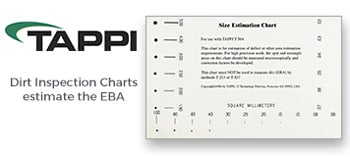 Search
Search
Use the search bar or filters below to find any TAPPI product or publication.
Filters
Publications
Level of Knowledge
Collections
Journal articles

Magazine articles

Fate of phosphorus in the recovery cycle of the kraft pulping process, TAPPI Journal March 2020
ABSTRACT: The accumulation of nonprocess elements in the recovery cycle is a common problem for kraft pulp mills trying to reduce their water closure or to utilize biofuels in their lime kiln. Nonprocess elements such as magnesium (Mg), manganese (Mn), silicon (Si), aluminum (Al), and phosphorus (P) enter the recovery cycle via wood, make-up chemicals, lime rock, biofuels, and process water. The main purge point for these elements is green liquor dregs and lime mud. If not purged, these elements can cause operational problems for the mill. Phosphorus reacts with calcium oxide (CaO) in the lime during slaking; as a result, part of the lime is unavailable for slaking reactions. The first part of this project, through laboratory work, identified rhenanite (NaCa(PO4)) as the form of P in the lime cycle and showed the negative effect of P on the availability of the lime. The second part of this project involved field studies and performing a mass balance for P at a Canadian kraft pulp mill.
Journal articles

Magazine articles

Synthesis of filtrate reducer from biogas residue and its application in drilling fluid, TAPPI Journal March 2020
ABSTRACT: Biogas residues (BR) containing cellulose and lignin are produced with the rapid development of biogas engineering. BR can be used to prepare the filtrate reducer of water-based drilling fluid in oilfields by chemical modification. BR from anaerobically fermenting grain stillage was alkalized and etherified by caustic soda and chloroacetic acid to prepare filtrate reducer, which was named as FBR. The long-chain crystalline polysaccharides were selected as dispersing agents (DA), and the water-soluble silicate was used as the cross-linking agent. After the hot rolling of FBR in saturated saltwater base mud for 16 h at 120°C, the filtration loss was increased from 7.20 mL/30 min before aging to 8.80 mL/30 min after aging. Compared with the commercial filtrate reducers, FBR had better tolerance to high temperature and salt, and lower cost.
Journal articles

Magazine articles

Lignin carbohydrate complex studies during kraft pulping for producing paper grade pulp from birch, TAPPI Journal September 2020
ABSTRACT: Paper grade pulp production across the globe is dominated by the kraft process using different lignocellulosic raw materials. Delignification is achieved around 90% using different chemical treatments. A bottleneck for complete delignification is the presence of residual covalent bonds that prevail between lignin and carbohydrate even after severe chemical pulping and oxygen delignification steps. Different covalent bonds are present in native wood that sustain drastic pulping conditions. In this study, 100% birch wood was used for producing paper grade pulp, and the lignin carbohydrate bonds were analyzed at different stages of the kraft cook. The lignin carbohydrate bonds that were responsible for residual lignin retention in unbleached pulp were compared and analyzed with the original lignin-carbohydrate complex (LCC) bonds in native birch wood. It was shown that lignin remaining after pulping and oxygen delignification was mainly bound to xylan, whereas the lignin bound to glucomannan was for the most part degraded.
Journal articles

Magazine articles

Application of spruce wood flour as a cellulosic-based wood additive for recycled paper applications— A pilot paper machine study, TAPPI Journal October 2021
ABSTRACT: This study gives a first insight into the use of wood flour as a plant-based and cellulosic-based alternative additive for newsprint and paperboard production using 100% recycled fibers as a raw material. The study compares four varieties of a spruce wood flour product serving as cellulosic-based additives at addition rates of 2%, 4%, and 6% during operation of a 12-in. laboratory pilot paper machine. Strength properties of the produced news-print and linerboard products were analyzed. Results suggested that spruce wood flour as a cellulosic-based additive represents a promising approach for improving physical properties of paper and linerboard products made from 100% recycled fiber content. This study shows that wood flour pretreated with a plant-based polysaccharide and untreated spruce wood flour product with a particle size range of 20 µm to 40 µm and 40 µm to 70 µm can increase the bulk and tensile properties in newsprint and linerboard applications.
Journal articles

Magazine articles

Utilization of palm fiber as papermaking materials: Microscopic structure and chemical pulping, TAPPI Journal October 2022
ABSTRACT: The microscopic structure and pulping properties of palm fiber were explored. Soda cooking and sulfate cooking were conducted and compared in terms of physical strength of the obtained pulps. Sulfate pulp showed better performance than soda pulp, as indicated by the 23% higher tensile index, 49% higher tear index, and 36% higher burst index. To further elevate physical strength, long fibered pulp (LFP), namely commercial softwood sulfate pulp, was mixed with sulfate pulp of palm fiber at levels from 20% to 50%. At the blend level of 50%, tensile index of 52.13 Nœm/g, tear index of 15.63 mNœm2/g, and burst index of 3.42 kPaœm2/g were attained. The lignin in spent liquor from pulping was isolated and characterized. Soda lignin of palm fiber was mainly composed of guaiacyl and syringyl units, and showed weight-average molecular weight of 3616 g/mol.
Journal articles

Magazine articles

Co-pulping of Trewia nudiflora and Trema orientalis, TAPPI Journal June 2023
ABSTRACT: Trewia nudiflora, a fast-growing species, was evaluated as a pulpwood. The a-cellulose content of this species was 40.4% with a Klason lignin of 21.5%. It was characterized by shorter fibers with a thin cell wall. The pulp yield was 40% with a kappa number of 16 at the conditions of 18% active alkali charge and 30% sulfidity for 2 h cooking at 170°C. T. nudiflora was similar to Trema orientalis in anatomical, morphological, and chemical composition; therefore, mixed chips at a 50:50 mixture ratio were cooked under optimum conditions. The pulp yield of mixed chip cooking was 45.4% with a kappa number of 19.4. The tensile and tear index of T. nudiflora pulps were 64.8 Nœm/g and 11.5 kPaœm2/g at 35 °SR, respectively. The mixed chips, T. nudiflora, and T. orientalis pulps showed above 81% brightness when bleached by D0(EP)D1 sequence using 20 kg chlorine dioxide (ClO2)/ton of pulp.
Journal articles

Magazine articles

Effect of high sulfate content on viscosity of recovery boiler molten smelt, TAPPI Journal March 2024
ABSTRACT: A systematic study was conducted to examine the effect of high sulfate content on the freezing temperature of molten smelt and how this may contribute to the formation of viscous jellyroll smelt in recovery boilers. The results show that even for recovery boilers with a smelt reduction as low as 70%, the sulfate content in smelt has no or little effect on smelt freezing temperature, and hence, on molten smelt fluidity. The perceived adverse effect of high sulfate content on smelt fluidity and on jellyroll smelt formation comes from the high sulfate content in deposits that have fallen from the upper furnace. Fallen deposits may or may not form jellyroll smelt, depending on whether or not they can melt and be well-mixed with molten smelt by the time they reach the smelt spouts. It is not the high sulfate content in smelt resulting from the low smelt reduction efficiency that makes molten smelt viscous and forms jellyroll smelt, but rather, it is the incomplete melting of fallen deposits that results in one of the proposed mechanisms for jellyroll smelt formation.
Journal articles

Magazine articles

A feasibility study of using the organic Rankine cycle for power generation from the flue gases of recovery boilers, TAPPI Journal August 2022
ABSTRACT: Almost 415 tons/h of flue gases with a temperature of 160°C are released to the atmosphere from the recovery boiler of a pulp mill with capacity of 1000 air dried (a.d.) metric tons of pulp per day. This is a large waste heat stream that can be used to generate power, to decrease the operating costs of a pulp mill, and to save carbon dioxide (CO2) emissions. In this work, the feasibility of using an organic Rankine cycle (ORC) with ammonia as the working fluid to generate power from the flue gases of recovery boilers is studied. CHEMCAD and Taguchi methods are used for simulation of the process and for optimization of operating conditions, respectively. The temperature of the ammonia and flue gases at the exit of evaporator, exit pressure of the pump and turbine, and the degree of subcooling of ammonia at the exit of the condenser are five operating parameters that are manipulated to optimize the process. Three different scenarios are defined: minimizing the net power cost, maximizing the ORC efficiency, and maximizing the net profit. Different aspects of these scenarios, such as net power generation, cost, efficiency, and CO2 emission savings are discussed, and optimum operating conditions are reported.
Journal articles

Magazine articles

Utilization of kraft pulp mill residuals, TAPPI Journal February 2022
ABSTRACT: Kraft pulp mills produce on average about 100 kg of solid residuals per metric ton of pulp produced. The main types of mill waste are sludge from wastewater treatment plants, ash from hog fuel boilers, dregs, grits, and lime mud from causticizing plants and lime dust from lime kilns. Of these, about half is disposed of in landfills, which highlights the need and potential for waste recycling and utilization. Sludge is either incinerated in hog fuel boilers to generate steam and power or used in various forms of land application, including land spreading, composting, or as an additive for landfill or mine waste covers. The majority of hog fuel boiler ash and causticizing plant residues is landfilled. Alkaline residuals can be conditioned for use in land application, manufacture of construction materials, and production of aggregates for road work. This technical review summarizes residuals utilization methods that have been applied in pulp and paper mills at demonstration- or full-scale, and therefore may act as a guide for mill managers and operators whose goal is to diminish the costs and the environmental impact of waste management.
Journal articles

Magazine articles

Exergy and sensibility analysis of each individual effect in a kraft multiple effect evaporator, TAPPI Journal October 2019
ABSTRACT: The multiple effect evaporator (MEE) is an energy intensive step in the kraft pulping process. The exergetic analysis can be useful for locating irreversibilities in the process and pointing out which equipment is less efficient, and it could also be the object of optimization studies. In the present work, each evaporator of a real kraft system has been individually described using mass balance and thermodynamics principles (the first and the second laws). Real data from a kraft MEE were collected from a Brazilian plant and were used for the estimation of heat transfer coefficients in a nonlinear optimization problem, as well as for the validation of the model. An exergetic analysis was made for each effect individually, which resulted in effects 1A and 1B being the least efficient, and therefore having the greatest potential for improvement. A sensibility analysis was also performed, showing that steam temperature and liquor input flow rate are sensible parameters.





